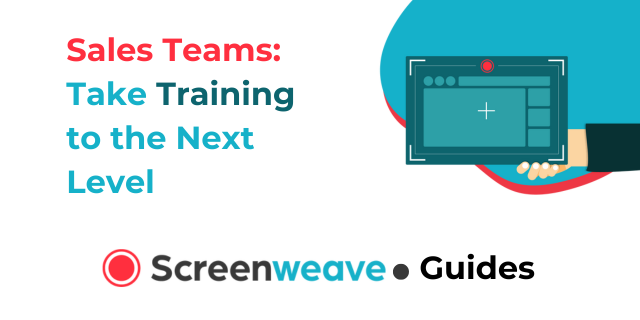Getting Started!:
Sales training is critical for ensuring your team is ready to close deals, overcome objections, and stay consistent across different regions or teams. But traditional training methods can be time-consuming, hard to scale, and inconsistent. By integrating video into your sales training, you can create engaging, repeatable content that your team can access anytime, anywhere.
This guide will walk you through how to start using video for sales training to improve performance, ramp up new hires faster, and create a more unified sales process.
Step 1: Identify Key Sales Training Needs
Before you start recording, it’s essential to identify which areas of sales training can be improved with video content. Some key areas might include:
- Product Knowledge: Create video modules that cover each product’s key features and benefits.
- Sales Pitch and Objection Handling: Record videos demonstrating how to deliver effective pitches and overcome common objections.
- Role-Specific Training: Tailor your video training to different roles, from junior sales reps to account executives.
Checklist:
- Identify areas of your current training program that could benefit from video.
- Create a list of key training modules that will help your sales team succeed (e.g., product knowledge, sales tactics, objection handling).
Step 2: Create Scalable, Engaging Video Training Content
Video training allows you to provide consistent, repeatable training content that scales easily across teams. Here’s how to structure your videos:
- Introduction: Start each video with a brief overview of the topic and its relevance to the sales process.
- Demonstration: Use role-playing scenarios or real-world examples to illustrate key sales techniques.
- Actionable Takeaways: Summarize the key points at the end of each video and provide actionable next steps for the sales team to implement.
Checklist:
- Create introductory videos for each module explaining why it matters to the sales process.
- Use real-world scenarios and demonstrations in your training videos.
- Provide clear takeaways at the end of each video to ensure the team knows what to do next.
Step 3: Customize Training for Different Sales Roles
Not all sales roles are the same, and your training should reflect that. Here’s how to customize training content:
- New Sales Reps: Focus on product knowledge, basic sales pitches, and handling common objections.
- Account Executives: Create videos on advanced sales techniques, managing client relationships, and closing deals.
- Sales Managers: Offer leadership training, coaching strategies, and data analysis tools to help manage their teams effectively.
Checklist:
- Develop video content for each sales role based on their specific responsibilities and challenges.
- Tailor videos to the experience level of the sales reps, with foundational training for new hires and advanced strategies for experienced team members.
Step 4: Incorporate Role-Playing and Interactive Learning
Engagement is key to effective sales training. Incorporate interactive elements like role-playing exercises and quizzes to reinforce learning:
- Role-Playing: Record scenarios where team members can practice handling different sales situations and objections.
- Interactive Quizzes: Include quizzes at the end of each video module to test knowledge retention and ensure your team is absorbing the material.
- Sales Pitches: Have team members submit their own recorded pitches for review and feedback.
Checklist:
- Create role-playing exercises that demonstrate how to handle common sales scenarios.
- Incorporate quizzes into your training videos to test knowledge retention.
- Encourage team members to submit their own video pitches for feedback and improvement.
Step 5: Track Progress and Provide Continuous Feedback
Tracking progress is essential for ensuring the effectiveness of your sales training. Use Screenweave to monitor who has completed each training module and provide continuous feedback:
- Progress Tracking: Keep track of video completion rates and quiz results to ensure team members are staying on course.
- Feedback Videos: Use Screenweave to provide personalized feedback to each team member, helping them improve their skills.
- Ongoing Training: Schedule regular updates to your training program as new products or sales strategies are introduced.
Checklist:
- Track completion of video modules and quizzes to monitor progress.
- Provide video feedback on submitted sales pitches and role-playing exercises.
- Update your video training content regularly to stay aligned with new sales strategies.
Step 6: Measure the Impact of Video-Based Sales Training
Once your video training program is up and running, it’s time to measure the results. Focus on metrics that show the impact on your sales team’s performance:
- Ramp-Up Time: Measure how long it takes new sales reps to become fully productive after completing the video training.
- Close Rates: Track the improvement in close rates after implementing video-based sales training.
- Sales Cycle: Measure the impact of video training on shortening the overall sales cycle.
Checklist:
- Track the ramp-up time of new hires and measure improvements after video training.
- Monitor close rates and conversion rates to see how video training impacts performance.
- Collect feedback from the sales team to continuously improve your video training modules.
Closing Thoughts:
Implementing video-based sales training allows your team to learn at their own pace while ensuring consistency across the board. By leveraging interactive content, role-specific training, and continuous feedback, you can create a scalable and effective sales training program that boosts performance and gets results.
Start your video training journey today and see how Screenweave can help you build a world-class sales team.
